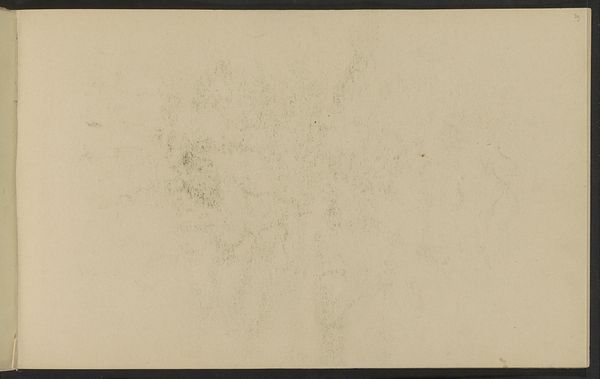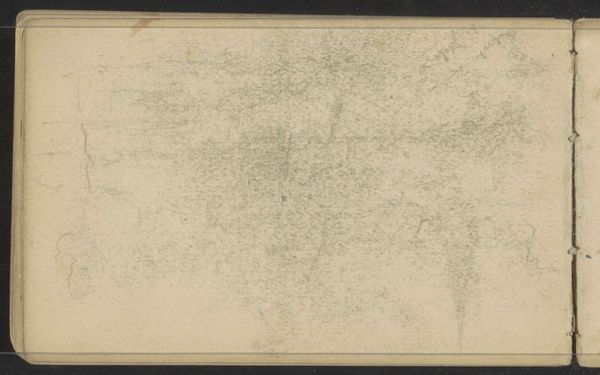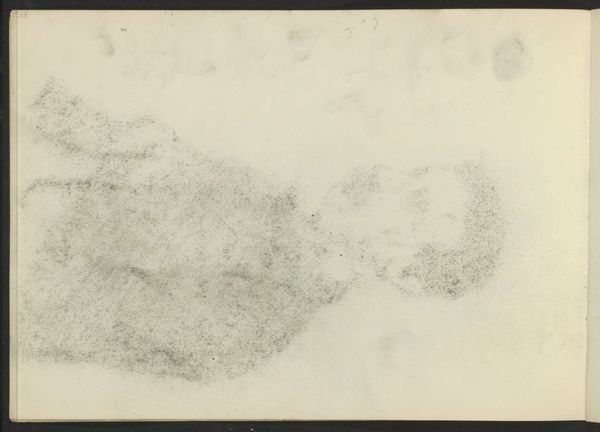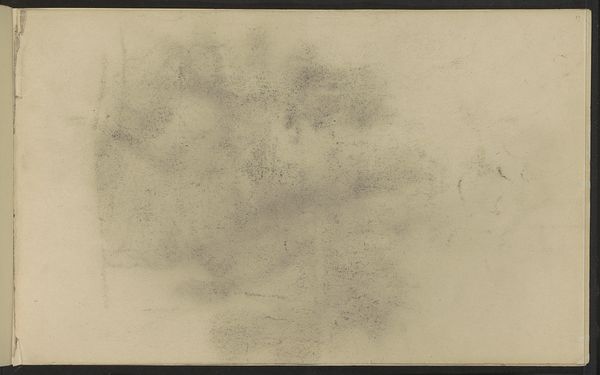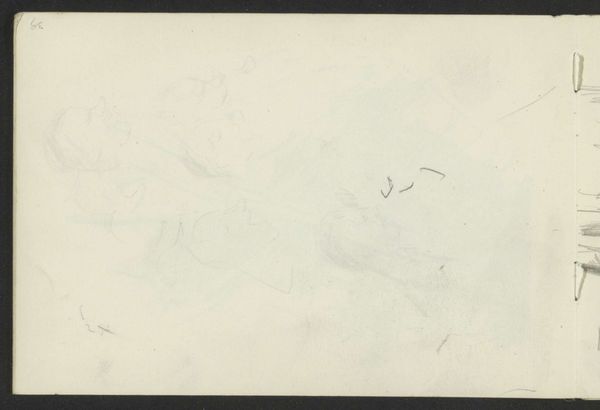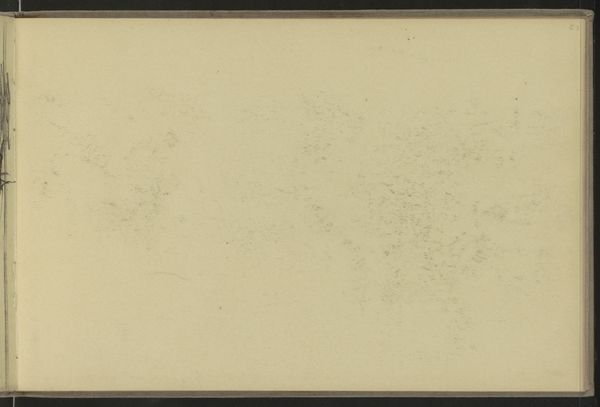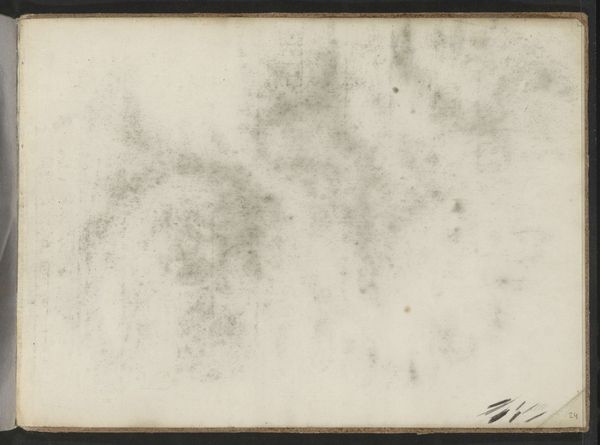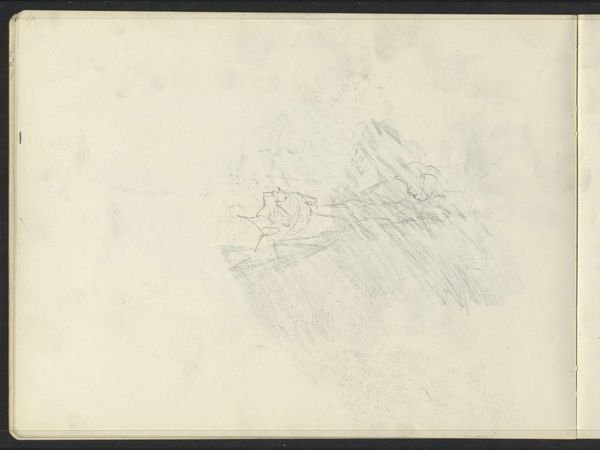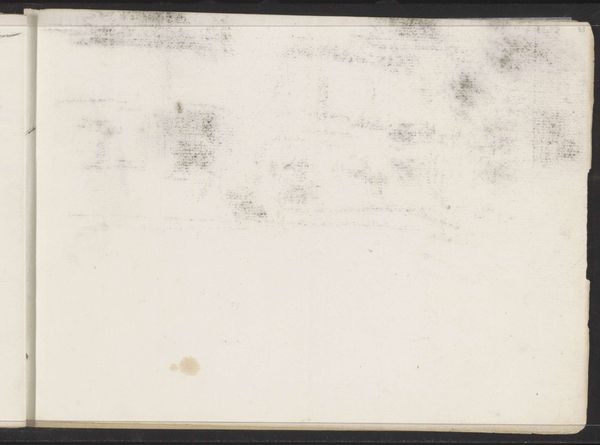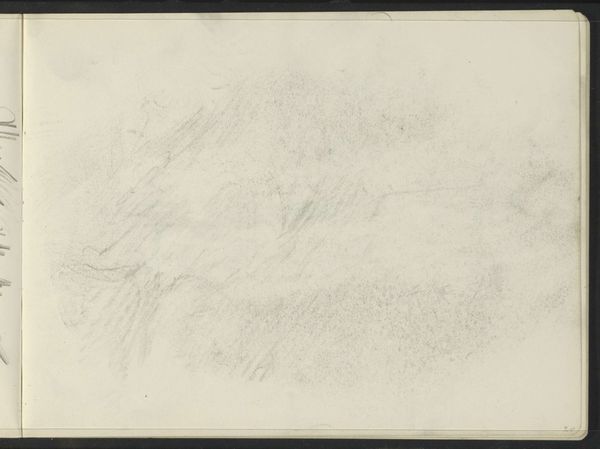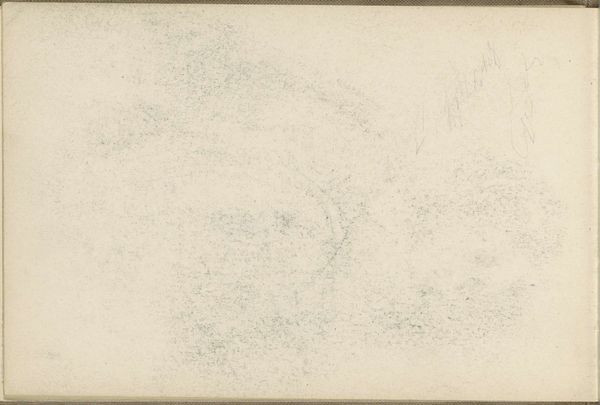
Copyright: Rijks Museum: Open Domain
Editor: So, this is "Studie," a drawing done sometime between 1875 and 1934 by Isaac Israels, currently residing in the Rijksmuseum. It’s done with pencil and pen on paper, a light sketch. What I notice right away is how ephemeral it feels, almost like a half-forgotten memory. What do you make of it? Curator: Ah, yes, ephemeral is a perfect word. It’s like catching a fleeting thought, isn't it? The beauty of impressionism often lies in these quick studies. I sense Israels was perhaps more interested in capturing a momentary feeling or impression, maybe even the light hitting a face, rather than a highly detailed portrait. Does the lack of distinct lines create a sense of ambiguity for you? Editor: It does. I see faint suggestions of shapes, but nothing concrete. It almost feels like he's challenging me to complete the image in my mind. Curator: Exactly! And in that way, we become active participants in the creation of the artwork. The visible pencil strokes, they are so full of nervous energy, suggesting movement and life. Do you see a potential face there or am I just imagining things? Editor: Now that you mention it, I think I can make out the barest suggestion of a face, tilted slightly downwards. Curator: Precisely! Israels wasn't trying to give us the whole story, only the essence of it. And perhaps that’s what makes it so engaging. Imagine finding this loose leaf between the pages of a book – wouldn’t that be lovely? Editor: It would. I came expecting a defined portrait, but this sketch makes me think about the power of suggestion. Curator: And that's often the most profound art, isn't it? The kind that makes you do some of the work, that lingers just out of reach, inviting us to keep looking, keep wondering. Editor: I agree. This sketch opened my eyes to finding value in what isn’t immediately apparent, or polished, and refined.
Comments
No comments
Be the first to comment and join the conversation on the ultimate creative platform.
